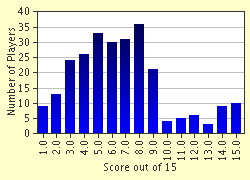Quiz Answer Key and Fun Facts
1. Who was the first woman to enroll in a medical school in the United States and receive her M.D. degree?
2. Which physicians are credited with the discovery and isolation of insulin in the pancreas of animals and then used it to treat patients with diabetes?
3. Who discovered Penicillin for which he received the Nobel Prize in Medicine in 1945?
4. Who discovered streptomycin, the first antibiotic effective for the treatment of tuberculosis, for which he was named Nobel Laureate in Medicine in 1952?
5. Which of the following is NOT true regarding the studies and career of Linus Pauling?
6. Who performed the first succesful human heart transplant in the United States?
7. Which of the following is NOT true regarding the studies and life of Albert Schweitzer?
8. Which physician discovered how to prevent puerperal fever in child birth by introducing antiseptic procedures in the delivery ward?
9. Who was the first to be credited with the discovery of the general anesthetic properties of ether?
10. Who introduced antiseptic techniques into the operating room and thereby reduced the mortality from post-operative infections from 50 percent to less than 15 percent in a few years?
11. Who was the first to strongly advocate the use of chloroform as a general anesthetic during the labor of childbirth?
12. For what discovery were James Dewey Watson and Francis Crick awarded the Nobel Laureate in Medicine in 1962?
13. Who first discovered the RNA-DNA molecule?
14. Which of the following is NOT true regarding the contributions of Louis Pasteur to science and medicine?
15. Who was 'The father of Medicine'?
Source: Author
YOMD39
This quiz was reviewed by FunTrivia editor
Snowman before going online.
Any errors found in FunTrivia content are routinely corrected through our feedback system.

